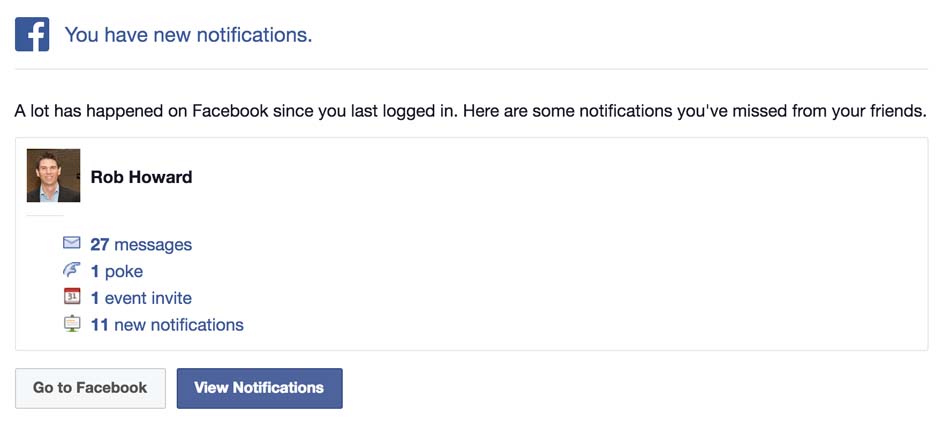Personalization involves using the data you have about your audience to understand how your content best fits their needs or interest.
This ensures visitors and customers get messaging tailored to them.
People are unique. Your content should be too.
Data powers all advanced marketing techniques (whether email, text, social or website content). More simply put, effective digital marketing run at scale involves matching context to content.
Content is king
Everyone says, “content is king,” and most content is drafted using personas to identify the audience that the content is written for.
But this strategy requires each individual visitor to find the right content for him or her.
And the way you help customers find the right content is through targeted marketing.
Targeted marketing
Targeted marketing divides groups of people into cohorts by demographic, geographic or other categorizations. Those cohorts are then sent direct or digital campaigns or can be targeted with advertising.
Targeted marketing campaigns often use simple “decorative personalization.” The most common example is an email personalized with the recipient’s name in the email’s salutation:
Hi Mike,
I wanted to let you know that our user group meeting is next week. We’re going to talk about content personalization.
…
But companies that use personalization effectively go one step further. They use context to enable one-to-one marketing by ensuring all content is tailored to the audience.
Content Personalization starts with context
To effectively use personalization, you need to understand context.
Context is the who, what, when, where, and how about your prospective customer or visitor.
Context includes answers to questions, including:
- How long have they been a customer?
- Where are they in the customer journey?
- What product pages have they viewed?
- What activities have they participated in, such as a recent webinar or event?
- Are they on social media? If so, what platform … Twitter, LinkedIn, Facebook?
- Is this a business user or a consumer?
- What time zone are they in? And where do they live?
- Where do they work? What is their job title?
Content encompasses all the assets about you, your company, and the products and services that fit a need the customer has. We call this the profile graph.
Content examples include (but are not limited to):
- Your website, blog and freely accessible content on your website
- PDFs, PowerPoints and other digital takeaway material
- Videos and images that can be distributed
- Channels, such as YouTube, Twitter, Instagram, LinkedIn and Facebook
- Social activities, such as online communities, Tweets, and updates
- Product reviews, press releases, testimonials
- Emails, text messages, chats and other digital conversations
- Advertisements shown to visitors through remarketing
Clearly, content personalization opportunities are endless.
If effective personalization requires context, then effective context requires data. Lots of data.
Personalization is data-driven
Your ever-growing knowledge of your audience can help drive your use of personalization.
Be sure and follow customer data best practices and applicable laws when it comes to customer data.
Also known as customer insight, the more data you have, the better you will understand the context of your audience. And the better you understand the context, the better you can personalize the content.
There are two types of customer insights you can collect for personalization purposes:
- Explicit customer insights
- Implicit customer insights
Personalization using explicit customer insights
Explicit customer insights are customer insights given to you by your customers:
- Products they purchase
- Questions they ask
- Other data they share, such as their mailing address
A good example of explicit customer insight for personalization is personalizing based on location.
You can use the location in an email to personalize the content or offer, such as an online store highlighting coats for colder climates.
Location also can be used to control delivery based on the timezone.

Explicit customer insights are somewhat easy to come by. You’re likely already collecting it. Whether you are keeping it is another problem.
Existing customers already trust you with their data. And often, they are willing to share additional information about themselves if it improves their level of service.
While building up customer insight around explicit customer data is straightforward, gathering implicit customer insight is a little more difficult.
Personalization using implicit customer insights
Implicit customer insights involve implied or extrapolated (from behavior) insights, such as:
- Pages viewed
- Links clicked
- Number of return visits
You can find a good example of this on popular social media sites, such as Facebook.
Haven’t visited in a few days? It’s likely you’ll receive notifications via email or text letting you know about activity that may interest you:

Another good example is Amazon’s use of product visits.
For example, I’m a big Brandon Sanderson fan. And I was recently browsing (and purchased) Book 3 from the Stormlight Archive series. You can check out the first book here.
Amazon followed up several days later with other suggestions that I may be interested in:

Both of those are good uses of implicit data in marketing to personalize the context of the email.
What type of data should you collect?
Every campaign you run is an opportunity to collect both explicit and implicit customer insights.
These insights shape your understanding of the customer and build the context you need for personalization.
This includes:
- Deliverability, opens, and replies on text messages and emails
- Link click tracking
- Surveys and product usage or purchase history
- Tracked visits, what content is viewed, depth and frequency of visits
- Demographic and geographic information about visitors
- Visitor industry classification
- Remarketing and retargeting across channels such as Google and Facebook
Not all metrics are positive. But they are still useful:
- Bounces or email opt-outs
- Website visit bounces
- Abandoned shopping carts
- Undeliverable text messages
- Negative comments or feedback
With DailyStory, you also augment customer insights with third-party data sources.
It’s important to remember to treat your customer data carefully. And because of privacy concerns, retaining insight about your visitors and customers can be tricky.
Key takeaways
Personalization is your ability to use the data you have about your audience to understand how your content best fits the needs or interests of your audience. This ensures visitors and customers get messaging tailored to their specific interests and needs.
To effectively use personalization, you need to understand context. Context is the who, what, when, where, and how about your prospective customer or visitor.
Your ever-growing knowledge of your audience drives your ability to use personalization. The more data you have, the better you will understand the context of your audience. And the better you understand the context, the better you can personalize the content.
There are two types of customer insights you can collect for personalization purposes: explicit and implicit customer insights.
It’s important to remember to treat your customer data carefully.
Share your tips and ideas with us. We’d love your feedback!

